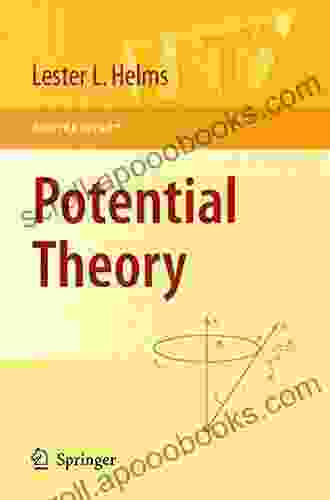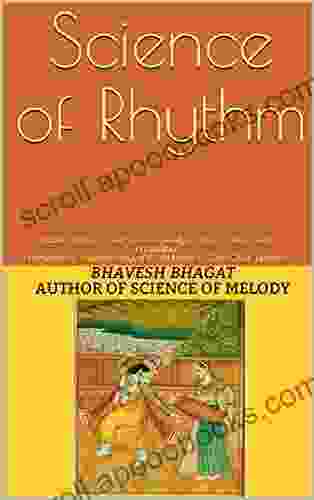Indian Rhythm Taal Shastra: A Comprehensive Exploration of Its Science and Sensibilities

In the captivating world of music, rhythm holds an unyielding sway over our emotions, transporting us to realms of ecstasy, tranquility, and everything in between. Indian music, with its rich tapestry of rhythmic traditions, has long captivated the hearts and minds of musicians and music enthusiasts alike. At the heart of this rhythmic tapestry lies Taal Shastra, an ancient system that unravels the intricate science and sensibilities of Indian rhythm.
Indian Rhythm Taal Shastra, a time-honored system of rhythmic analysis, offers a comprehensive framework for understanding the intricate complexities of Indian rhythms. It delves into the fundamental elements of rhythm, such as beat, tempo, cycle, and meter, and explores how these elements interact to create the mesmerizing rhythms that define Indian music.
Taal Shastra categorizes rhythm into various types known as taals, each possessing a unique rhythmic pattern and structure. These taals serve as the foundation upon which musicians improvise and compose melodies, adding layers of rhythmic complexity to their performances.
5 out of 5
| Language | : | English |
| File size | : | 20888 KB |
| Text-to-Speech | : | Enabled |
| Screen Reader | : | Supported |
| Enhanced typesetting | : | Enabled |
| Word Wise | : | Enabled |
| Print length | : | 161 pages |
| Lending | : | Enabled |
The science of rhythm, as elucidated in Taal Shastra, is based on mathematical principles and proportions. Each taal is characterized by a specific number of beats or matras, which are further divided into smaller units called vibhags. These vibhags form the building blocks of rhythm, providing a precise framework for rhythmic execution.
Taal Shastra also explores the concept of tempo, or laya, which governs the speed at which a taal is played. The tempo can vary from slow and meditative to fast and exhilarating, creating distinct rhythmic experiences that evoke a wide range of emotions.
Beyond the scientific underpinnings, Taal Shastra delves into the sensibilities of rhythm, examining how it resonates with human emotions and experiences. Indian rhythm is deeply intertwined with the cultural and spiritual traditions of India, and its rhythmic patterns often mirror the rhythms of nature and the human body.
Taal Shastra provides insights into the aesthetic principles that guide rhythmic improvisation in Indian music. It emphasizes the importance of balance, symmetry, and contrast, guiding musicians in creating rhythmic structures that are both pleasing to the ear and emotionally evocative.
The origins of Taal Shastra can be traced back to ancient Indian scriptures and treatises on music. Over centuries, it has evolved and been refined, becoming an integral part of Indian classical music traditions. Taal Shastra has played a pivotal role in shaping the rhythmic foundations of diverse musical genres, including Hindustani, Carnatic, and folk music.
Taal Shastra is not merely a theoretical construct but a practical tool for musicians and music educators. It provides a systematic approach to learning and understanding Indian rhythm, enabling musicians to develop a deep understanding of rhythmic structures and improvisation techniques.
In performance, Taal Shastra guides musicians in maintaining rhythmic accuracy, ensuring that their improvisations and compositions adhere to the established rhythmic framework. It also serves as a common language for musicians from different backgrounds, allowing them to collaborate seamlessly in ensemble performances.
Indian Rhythm Taal Shastra is a profound exploration of the science and sensibilities of Indian rhythm. It provides a comprehensive framework for understanding the intricate rhythmic patterns that define Indian music, offering insights into the mathematical principles, aesthetic considerations, and cultural significance of rhythm.
By delving into the depths of Taal Shastra, musicians and music enthusiasts alike can unlock the rhythmic secrets of Indian music, gaining a deeper appreciation for its mesmerizing beauty and emotional power. Whether you are a seasoned performer, a budding enthusiast, or simply seeking to expand your knowledge of music, Indian Rhythm Taal Shastra is an invaluable resource that will illuminate your journey through the enchanting world of rhythm.
Further Reading:
- The Rhythmic Structure of Indian Music by Walter Kaufmann
- The Art of Tabla by Pandit Suresh Talwalkar
- Taal Darshan by Hazariprasad Misra
5 out of 5
| Language | : | English |
| File size | : | 20888 KB |
| Text-to-Speech | : | Enabled |
| Screen Reader | : | Supported |
| Enhanced typesetting | : | Enabled |
| Word Wise | : | Enabled |
| Print length | : | 161 pages |
| Lending | : | Enabled |
Do you want to contribute by writing guest posts on this blog?
Please contact us and send us a resume of previous articles that you have written.
 Book
Book Novel
Novel Page
Page Chapter
Chapter Text
Text Story
Story Genre
Genre Reader
Reader Library
Library Paperback
Paperback E-book
E-book Magazine
Magazine Newspaper
Newspaper Paragraph
Paragraph Sentence
Sentence Bookmark
Bookmark Shelf
Shelf Glossary
Glossary Bibliography
Bibliography Foreword
Foreword Preface
Preface Synopsis
Synopsis Annotation
Annotation Footnote
Footnote Manuscript
Manuscript Scroll
Scroll Codex
Codex Tome
Tome Bestseller
Bestseller Classics
Classics Library card
Library card Narrative
Narrative Biography
Biography Autobiography
Autobiography Memoir
Memoir Reference
Reference Encyclopedia
Encyclopedia Bron James
Bron James Bridgette Sharp
Bridgette Sharp Billy Joel
Billy Joel Brian Allen Drake
Brian Allen Drake Briallen Hopper
Briallen Hopper Bradley Harper
Bradley Harper Shawn A Henry
Shawn A Henry Brendan O Carroll
Brendan O Carroll Jason J Nugent
Jason J Nugent Wendy Paris
Wendy Paris Brian Green
Brian Green Brandi Heather
Brandi Heather Lawrence S Meyers
Lawrence S Meyers Julie Chimes
Julie Chimes Bonnie Urciuoli
Bonnie Urciuoli Ella Maven
Ella Maven Donald B Percival
Donald B Percival Bill Minutaglio
Bill Minutaglio Brian Turner
Brian Turner Brittany Eden
Brittany Eden
Light bulbAdvertise smarter! Our strategic ad space ensures maximum exposure. Reserve your spot today!

 W.B. YeatsGeorgia Boy: Dancing Dolphin Patterns - Unraveling the Hidden Rhythms of the...
W.B. YeatsGeorgia Boy: Dancing Dolphin Patterns - Unraveling the Hidden Rhythms of the...
 Vincent MitchellProtecting Critical Infrastructure and Personnel: A Comprehensive Guide to...
Vincent MitchellProtecting Critical Infrastructure and Personnel: A Comprehensive Guide to...
 Vernon BlairTake Control of Your Cholesterol: A Comprehensive Guide to Lowering Your Risk
Vernon BlairTake Control of Your Cholesterol: A Comprehensive Guide to Lowering Your Risk Warren BellFollow ·19.8k
Warren BellFollow ·19.8k Cortez ReedFollow ·5.2k
Cortez ReedFollow ·5.2k Clarence BrooksFollow ·10.3k
Clarence BrooksFollow ·10.3k Ernest J. GainesFollow ·15.1k
Ernest J. GainesFollow ·15.1k Ivan CoxFollow ·15.5k
Ivan CoxFollow ·15.5k Duncan CoxFollow ·18k
Duncan CoxFollow ·18k Andrew BellFollow ·3.2k
Andrew BellFollow ·3.2k Spencer PowellFollow ·11.9k
Spencer PowellFollow ·11.9k

 Corey Green
Corey GreenHuman Geography: A Concise Introduction by Gilbert...
A Journey into the Dynamic Realm of...

 Julian Powell
Julian PowellTrain Your Mind to Make Great Art a Habit
Do you dream of...

 Matthew Ward
Matthew WardSmall Town Romance: Heart Compass
Escape to Willow Creek, Where...

 Neil Parker
Neil ParkerMusic, Social Media, and Global Mobility: Exploring...
: The Convergence of Music, Media, and...

 Seth Hayes
Seth HayesUnlock the Potential of Potential Theory with Brooke...
Embark on an...
5 out of 5
| Language | : | English |
| File size | : | 20888 KB |
| Text-to-Speech | : | Enabled |
| Screen Reader | : | Supported |
| Enhanced typesetting | : | Enabled |
| Word Wise | : | Enabled |
| Print length | : | 161 pages |
| Lending | : | Enabled |








